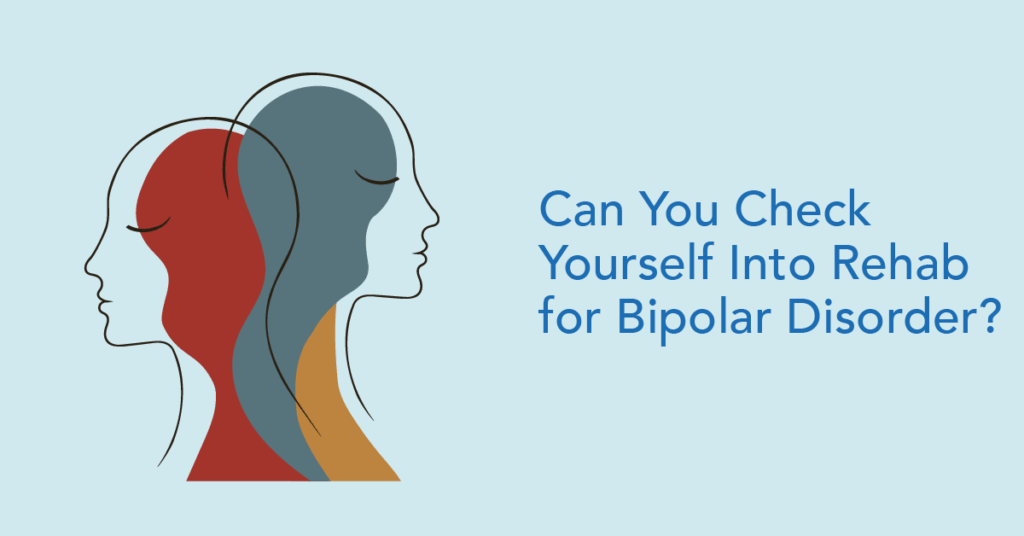Bipolar disorder is a mental health condition that involves episodes of depression and mania or hypomania and affects around 1 in 150 adults. These mood shifts can disrupt your daily life, relationships and ability to function at work or school. While many people manage bipolar disorder with outpatient treatment, there are times when inpatient or residential care becomes the best option.
In this article, we’ll walk through how bipolar rehab works, what to expect and how to know if it’s the right choice for you.
What Is Bipolar Disorder?
Bipolar disorder is a condition that causes extreme changes in mood, energy and activity levels. There are different types, including:
- Bipolar I. Characterized by full manic episodes, often alternating with periods of major depression
- Bipolar II. Involves hypomanic episodes (less severe than mania) and major depression
- Cyclothymic disorder. Involves frequent, less severe mood swings that last at least 2 years
Symptoms of mania may include:
- Racing thoughts
- Decreased need for sleep
- Impulsivity or risky behavior
- Grandiose thinking
- Irritability or agitation
Symptoms of depression may include:
- Low energy
- Hopelessness or sadness
- Sleep and appetite changes
- Trouble concentrating
- Thoughts of self-harm or suicide
When unmanaged, bipolar episodes can lead to job loss, relationship stress, legal problems or hospitalization.
What Is Rehab for Bipolar Disorder?
Rehab for bipolar disorder is a type of inpatient or residential treatment program that offers around-the-clock care in a structured setting. These programs are designed to help stabilize mood episodes, fine-tune medications and provide therapy and life skills training.
You don’t have to wait for a crisis to enter rehab. Many people choose inpatient care when they:
- Experience intense or frequent mood swings
- Struggle to follow outpatient treatment plans
- Need a break from everyday stressors
- Want a fresh start with professional support
In short, rehab creates space to reset and recover with supervision and support.
How to Check Yourself Into Bipolar Rehab
You don’t need to wait for someone to refer you. If you’re ready to seek care, here’s how to begin the process yourself.
- Search for Programs That Treat Bipolar Disorder
Look for facilities that specialize in mood disorders or serious mental illness. Use search terms like “bipolar disorder rehab near me,” or call a mental health hotline for recommendations. - Contact the Facility Directly
Speak to their admissions staff. They’ll ask about your symptoms, treatment history, medications and current needs. They can also walk you through availability and next steps. - Check Insurance or Payment Options
Ask if the program accepts your insurance or offers sliding-scale rates. If cost is a barrier, many programs will help you explore financing, public programs or financial aid. - Schedule Your Admission
If a bed is available, you may be able to check in within days. Be ready to complete paperwork and share emergency contact info. - Pack What You Need
Bring essentials like clothes, ID, current medications and a list of contacts. Most facilities will guide you on what is and isn’t allowed.
What to Expect in Bipolar Disorder Treatment
Rehab programs offer a variety of bipolar disorder treatments designed to reduce symptoms, improve stability and build coping skills.
- Medication Management
Medications are often a core part of care. These may include mood stabilizers, antipsychotics or antidepressants, depending on your symptoms. A psychiatrist will adjust your treatment plan based on how you respond. - Individual Therapy
Therapy helps you explore thought patterns, emotional triggers and coping strategies. Cognitive behavioral therapy (CBT) and dialectical behavior therapy (DBT) are commonly used. - Group Therapy
In group settings, you’ll share experiences, practice communication skills and gain support from others who understand what you’re going through. - Life Skills Training
Some programs include classes on managing stress, building routines, nutrition and setting healthy boundaries — all of which support long-term recovery. - Family Education and Support
Your loved ones may be invited to participate in sessions to learn more about bipolar disorder therapies and how to support you after discharge. - Discharge and Aftercare Planning
Before leaving rehab, the care team will help you set up a plan that may include outpatient therapy, medication follow-up, support groups or transitional housing if needed.
The Most Effective Treatment for Bipolar Disorder
The most effective treatment for bipolar disorder is a combination of:
- Medication to stabilize mood
- Psychotherapy to manage behavior and thought patterns
- Lifestyle changes that support wellness
- Ongoing support from professionals and community resources
Rehab programs provide all these elements in one place, making them a powerful option for people who need more intensive care than weekly therapy can provide.
When Should You Consider Inpatient Rehab?
Consider checking into rehab if you:
- Are having frequent or severe mood episodes
- Have thoughts of harming yourself or others
- Are struggling with substance use alongside bipolar symptoms
- Can’t maintain stability with outpatient care
- Need time away from stressors to focus on healing
It’s okay to need more than once-a-week therapy. It’s okay to ask for help before things become dangerous.
Frequently Asked Questions
Most mental health facilities accept voluntary admissions. If you’re experiencing unstable moods or struggling to manage your symptoms, rehab can be a safe, supportive next step.
In rehab, you’ll receive a combination of medication management, individual and group therapy and life skills support. The goal is to help you stabilize and create a plan for long-term care.
Treatment may last from a few weeks to several months, depending on your needs, symptoms and progress. Your care team will help determine the right timeline for you.
Inpatient care is available for anyone who feels outpatient treatment isn’t enough. It’s about getting the level of support you need — not about how “bad” things have gotten.
Many programs accept insurance or offer payment assistance. You can also call a mental health hotline to find options that fit your budget.
You Deserve Comprehensive Care
Bipolar disorder is treatable — but treatment isn’t one-size-fits-all. If you’re tired of managing your symptoms alone or feel outpatient therapy isn’t enough, checking into a rehab program can provide the structure and support you need to stabilize and grow. Call the Mental Health Hotline today for free, confidential support. We’ll help you explore rehab options, answer questions about insurance and take the next step toward the care you need and deserve.
Editorial Team
-
 Written By: Mental Health Hotline
Written By: Mental Health HotlineMental Health Hotline provides free, confidential support for individuals navigating mental health challenges and treatment options. Our content is created by a team of advocates and writers dedicated to offering clear, compassionate, and stigma-free information to help you take the next step toward healing.
-
 Reviewed By: Dr. Daphne Fatter
Reviewed By: Dr. Daphne FatterDaphne Fatter, Ph.D., is a licensed psychologist, and international speaker dedicated to providing education on integrative trauma-informed therapies. She is the author of Integrating IFS (Internal Family Systems) into EMDR therapy. She is EMDR Certified and an EMDRIA Approved Consultant and has almost 20 years of experience providing EMDR. She is also IFS Certified and an Approved...


